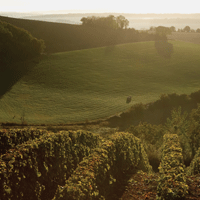Years ago nobody questioned tradition and terroir as it pertained to Old World wines, which have garnered a solid reputation for centuries. Today, tradition has changed as more sommeliers and restaurant owners champion local wines to consumers also interested in cocktails and craft beers. Old World wines are still valued, but restaurant operators have been forced to become more creative to keep sales steady, educating customers, while offering affordable options and food pairings.
Four years ago, the wine list at Sooke Harbour House in Victoria, B.C., boasted more than 2,000 wines. “That number has declined dramatically,” laments Sinclair Philip, Sooke’s co-owner and wine director. “People are spending less, and they are paying less attention to quality,” he explains. Burgundy whites, Italian whites and Spanish whites and reds are selling, but he’s noticing a customer base that’s becoming increasingly price-conscious and opting for “cheap and cheerful” local wines.
Despite the push to local grapes, research shows Old World wines have staying power. According to a February 2011 report by the London, U.K.-based International Wine and Spirits Firm for Vinexpo, an international wine and spirits tradeshow, imported wines comprised 72 per cent of Canada’s total wine consumption in 2009, with France taking the lead as the country’s top wine supplier. The same study reports Italian wine imports were up 23.15 per cent from 2010, and predicts Italy may overtake France as the top exporting region to Canada if the trend continues.
At The Post Hotel & Spa in Lake Louise, Alta., Old World wines make up an estimated 40 per cent of wine orders, according to Kristina Long, sommelier at the Post’s Dining Room. New World wines also earn 40 per cent of sales, followed by local wines with 15 to 20 per cent. The trick is to offer a variety of wine that ranges from “trophy wine” to cheaper varieties. “What people forget when they think of Old World wines, is there are some amazing bargains,” she explains, emphasizing that restaurateurs can offer Old World wines from smaller regions, less well-known producers and still offer excellent value. Post’s extensive wine list proves more affordable varieties exist, such as half-bottles of 2010 Sancerre (pictured below), Pascal Jolivet ($37) or a 2008 Chianti Classico “Font-erutoli” Mazzei ($36).
Educated and enthusiastic servers are the key; they can drive sales, capturing customer interest by telling a story about the wine. Peter Boyd, wine director and purchaser for Toronto-based Enoteca Sociale and Scaramouche Restaurant, spends an hour with his staff every week, introducing them to new wines and providing back stories on their rich history.
Knowledgeable wait staff can also read wine labels, says Post Hotel’s Long. “For a lot of these regions, the grapes are not on the label and [customers] don’t particularly know what they are, so [they] are afraid to try them,” she explains.
Ultimately, it’s about introducing the Old World to the New World. Old World wines are built on history of terroir, explains Boyd. “Stories sell wine. Engaged people sell esoteric wine.”
Keep Reading
Thirst Quenchers: QSR Customers are Craving Iced Coffee and Smoothies




















